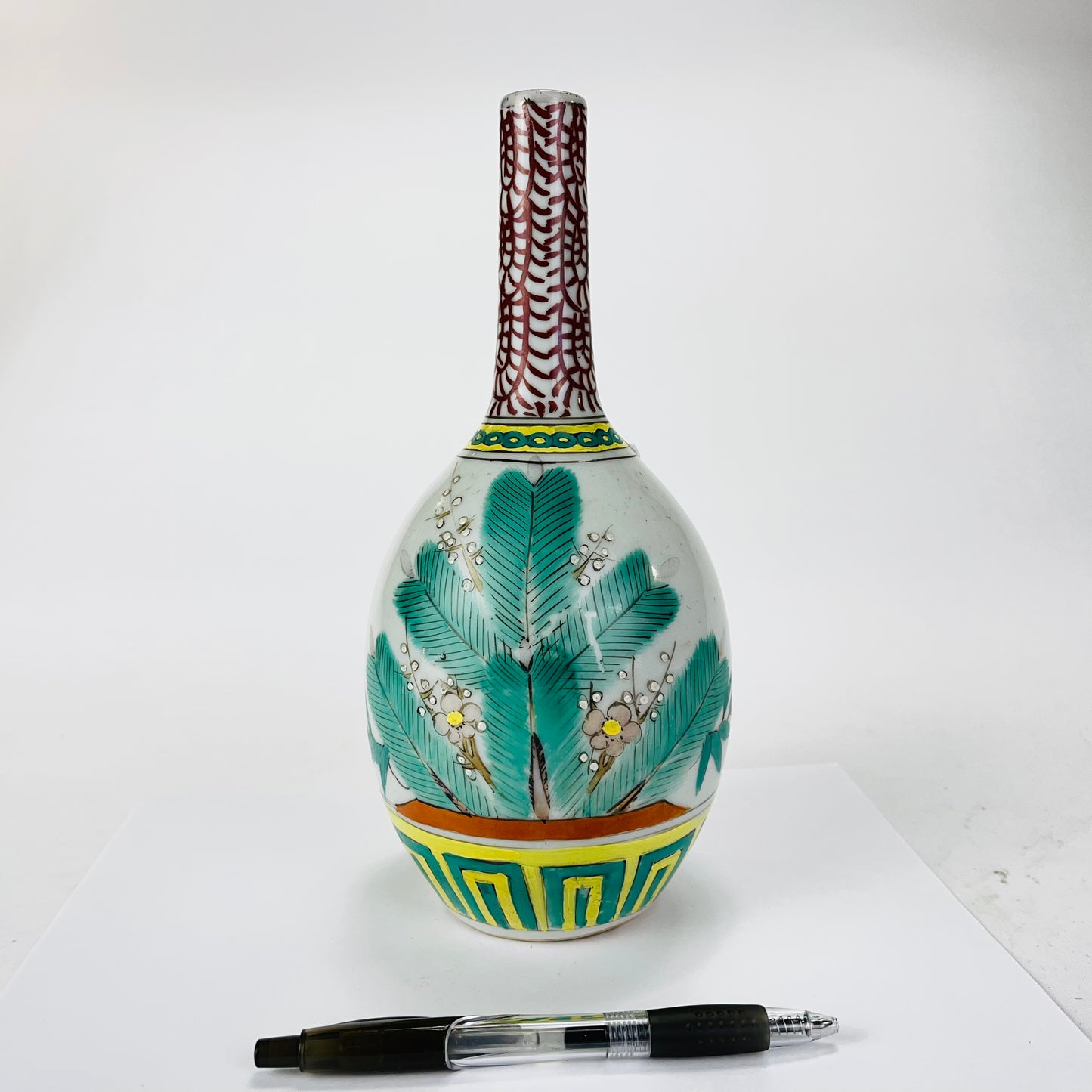Antique Japanese Taisho Era Imari Vase Shochikubai 11"
Antique Japanese Taisho Era Imari Vase Shochikubai 11"
Couldn't load pickup availability
This is an antique Taisho Era (c. 1920's) Japanese Imari Vase. It is hand painted in with motif. Shochikubai When describing auspicious things, the Japanese often use the compound term composed of 3 separate words, Sho Chiku Bai (松竹梅). Shochikubai has the literal meaning of pine (Sho 松), bamboo (Chiku 竹), and ume plum (Bai 梅). The origin of the Japanese term Shochikubai (松竹梅) comes from Saikan no Sanyu (歳寒三友 Three Friends of Winter), a subject loved by ancient Chinese painters. The painting subject, Saikan no Sanyu (歳寒三友) or Three Friends of Winter, came from China during the Heian period (794 to 1185) when the word Sho (松) came to symbolize auspiciousness because the pine tree is evergreen. Japanese people associated it with longevity. Subsequently, during the Muromachi period (1336 to 1573), Chiku (竹) came to stand for good luck, and so did Bai (梅) during the Edo period (1603 to 1868) because bamboo has vigorous vitality plum tree blossoms in the winter. Those items named Sho Chiku Bai are typically used to indicate grade/quality of themselves.
This vase is made of ceramics fired at high temperatures for lasting durability. It measures 11 1/2" tall (29 cm) by 4 1/2" in diameter (11.5 cm).
































